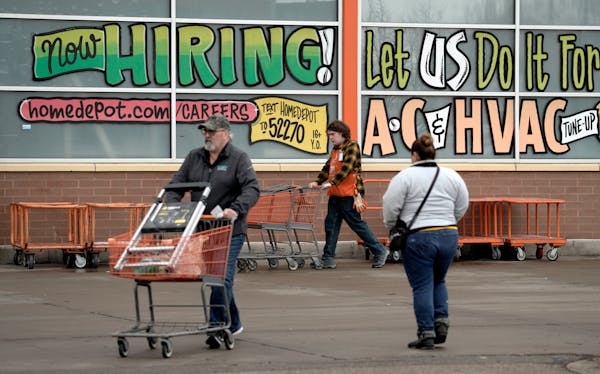Mankato has the lowest unemployment of any city in the nation — and it is one of six cities in the state or on its border that were among the 20 best for jobs this fall.
Coming in at an ultra-low 1.3%, Mankato was at the very top of the U.S. Bureau of Labor Statistic's list of metro areas with the lowest unemployment rates for September. Figures for October will come out next week.
The entire state of Minnesota came in at a 2.1% unemployment rate for October, tying with Utah for the No. 1 spot among states. Minnesota has been on top since June, when it recorded the lowest state unemployment rate in U.S. history of 1.8%.
The low rates are shaped by strong hiring since the coronavirus pandemic was brought under control and a shrinking of the overall labor pool. The state's 3 million-plus workforce is still about 90,000 workers smaller than it was before the pandemic.
Labor experts have pointed to accelerated retirements among the state's aging population and continuing challenges with child or elder care as some of the reasons some workers haven't returned to the labor force.
In September, Rochester, with an unemployment rate of 1.5%, was tied for having the fourth-lowest jobless rate in the U.S. with Sioux Falls, S.D., and Jefferson City, Mo. St. Cloud came in at No. 11 with a jobless rate of 1.7%.
The Twin Cities made the list, too. With a jobless rate of 1.9%, it was in a six-way tie for No. 19.
Fargo (1.4%) and Grand Forks (1.6%) — cities in neighboring North Dakota whose metro regions include towns in Minnesota — also made the top 10.
So what's going on in these Minnesota cities that have brought their unemployment rates so low?
"We know Rochester has a strong health care sector," Alicia Cordes-Mayo, a spokeswoman for the Minnesota Department of Employment and Economic Development, wrote in an email. "And Mankato and St. Cloud have universities and significant manufacturing opportunities."
All those elements can contribute to low unemployment rates, she added.
Health care and manufacturing are some of the industries that have been most acutely feeling the pinch of labor shortages.
Mankato has always had a very low unemployment rate — often below 3% in its busiest times of the year — and a very high labor force participation rate, said Ryan Vesey, economic development and research manager for Greater Mankato Growth, the region's chamber of commerce.
But 1.3% is tied for the lowest it's ever been, he said.
Vesey said Mankato employers are searching harder for workers, recruiting more people with disabilities or those who are reintegrating after being incarcerated, and being more accommodating of immigrants. He cited one recent example of a manufacturer putting in foot-washing stations and prayer rooms for East African workers.
Employers are also looking to automation and robotics to help fill in the gaps, he said.
"I think sometimes people look at that low unemployment figure and say, man it's really hard to be an employer right now," Vesey said. "But the thing that sometimes gets missed is unemployment only gets this low because the businesses are doing extremely well. Otherwise they wouldn't need all of these people."
Sean O'Neil, director of economic research for the Minnesota Chamber of Commerce, noted that Minnesota often has a much lower unemployment rate compared with the U.S. as a whole. In October, the U.S. jobless rate was 3.7%.
He said the difference between the two right now is about the same as it's been over the past several decades since the federal government began tracking state unemployment rates in 1976.
But during the pandemic, Minnesota lost more people from its labor force than some other states that also have low unemployment rates, he said.
"And we haven't seen a large recovery of those workers," O'Neil said. "So that is an intensifying factor that is contributing to these really historic low unemployment rates."
